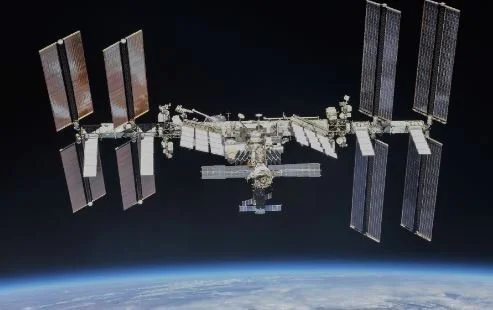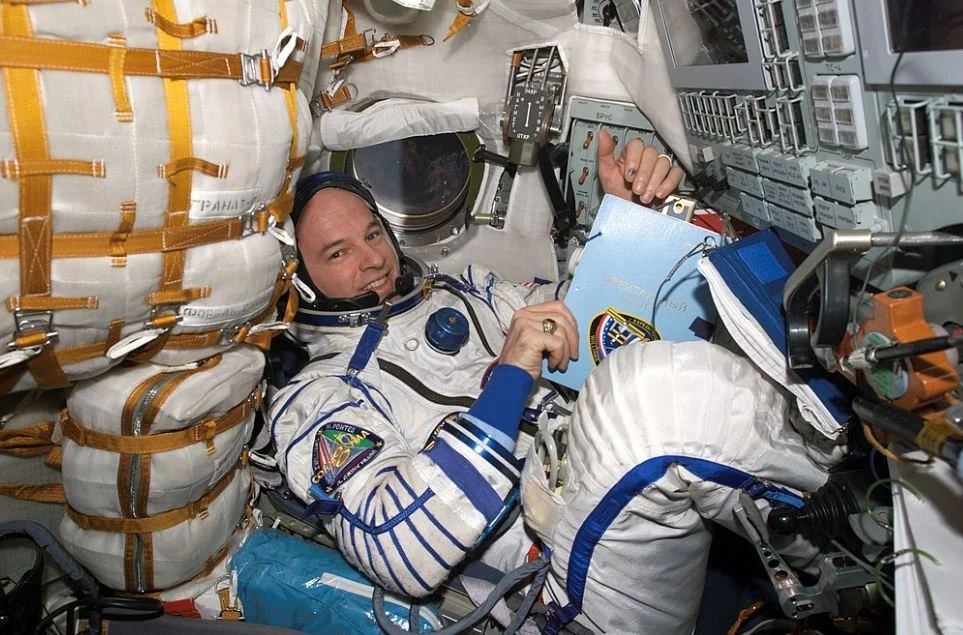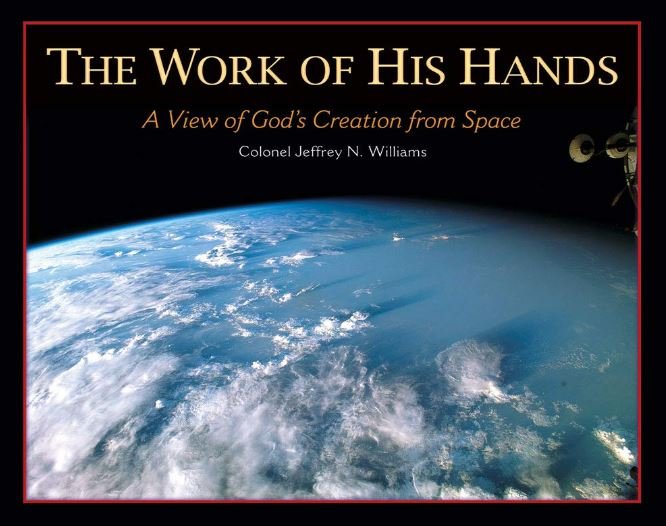Astronaut Col. Jeffery Williams landing in Hood River March 21
An interview with astronaut Col. Jeffery Williams reveals insights about life aboard the International Space Station, his career at NASA and previews his upcoming presentation at Hood River Middle School on March 21.
International Space Station
Hood River, Ore., Feb. 28, 2024 — Columbia Gorge Tech Alliance will host “3-2-1 LIFTOFF!” a presentation from NASA Astronaut Col. Jeffrey Williams on Thursday, March 21, from 7 - 8:30 p.m. at the Hood River Middle School at 1602 May Street.
Williams will be sharing what it's like to be an astronaut aboard the International Space Station. He is a veteran of four space flights and formerly held the American record for most days spent in space. For more information and to book your tickets, click here.
I contend that the International Space Station is technically and administratively, the highest achievement in human history.
By Jim Drake
The Gorge has a chance to meet and hear NASA Astronaut Col. Jeffery Williams, as he talks about his career and work aboard the International Space Station on Thursday, March 21.
Williams onboard Soyuz TMA-8
Williams, who started astronaut training in 1996, not only holds a record for longest number of days spent in space, he was involved in the first spacewalks for assembling the structure, and says that his last flight confirmed the station is “all systems go.”
“My entire career as an astronaut basically encompassed the early development, initiation and the building of the space station, and on my last flight in 2016 it was in full operational mode,” Williams said in a recent interview with CCCNews.
Now retired from NASA, Williams says he and his family have relocated from Texas to the Northwest, a move inspired by what he calls the international partnership culture of the International Space Station, which includes the U.S., Russia, Japan, Canada, and some European countries.
“In fact, what brought us to the Northwest was initiated with my networking in an evangelical church in Moscow. Now we live in a town that has a Slavic immigrant community, a fairly large one that started in the 1990s with several waves of immigration after the fall of the Soviet Union. So, from a personal point of view, that has made the entire experience with the space station even more rich,” Williams said.
Orbiting the earth at 17,500 mph, the International Space Station can circle the globe 16 times a day, providing astronauts a chance to see and study earth’s details, and as Williams can attest to, an opportunity to take pictures.
Actually, about half a million of them.
“I am known for my photography, that was really my passion, and my free time was to take pictures and capture everything I could. I’m told I took nearly 500,000 photos. I have not gone through them all, but about 350 of them made it into the book I had published,” Williams said.
Taking photos from a special windowed structure called the “cupola,” Williams said a book publisher approached him at one of his lectures and prompted him to publish “The Work of His Hands: A View Of God's Creation From Space,” in 2010.
“What I tried to do in the book was vicariously take the reader through the experience. It was difficult to choose the photos, I had a lot of help from my wife,” Williams said.
Williams said the different lighting conditions brought out interesting things on the surface of the earth and the resulting views inspired him to share those photos with as many people as possible.
“I knew going in that photography captures the memory, and on that first 10 day flight, there were so many impressions and I was oversaturated with all of the visual stimulus. But I knew that a photograph would become a permanent memory for me. I like photographs better than video,” Williams said.
williams at work in the Destiny laboratory.
Williams’ presentation at the Hood River Middle School on March 21 is hosted by the Gorge Technology Alliance (GTA), an organization that promotes aerospace and other high tech industries. Williams said he discovered the GTA through working with a Pendleton engineering company, and said he was surprised at the number of companies in the Alliance.
“I learned about the businesses in Hood River that were working in the early years of drone technology, and that in part blossomed into a network of industries and companies. It’s impressive, especially given the size of the city,” Williams said.
Williams says that since the creation of the International Space Station, there has been “a continuous human presence in space since about 2000.” He says that extending the life of the station is a continual concern and keeping the space programs funded relies on the cooperation of the international partnerships and political will of the countries involved.
“Of course when you design an aircraft or spacecraft you have design requirements that specify a lifetime, and once you do that then you can recertify the vehicle to maybe extend its lifetime, a great example is the B-52 which is still a mainstay for our military.
“We put up the first ISS element in 1998, and we extended it because it took longer to build with the Space Shuttle grounded after the loss of the Columbia crew, and other technical challenges, it took longer to assemble than originally planned, which is not unusual,” Williams said.
Williams says that current international partnerships have extended the certifications for the ISS to 2028, and he said that it will take more than just the political will of the U.S. to keep the program going. But even in the face of world conflict the space program is an example of hope.
“The most critical partner, all of them are critical, but the most critical is, one that we cannot continue without, for sure, is Russia,” Williams said.
“Nowadays, everybody is interested in if we are working with Russia. Yeah, in fact we’re cooperating as good as ever, even with the war going on. In fact, we’re the only positive engagement between the countries, right now,” Williams said.
Williams says that the international partnerships within ISS have enriched his experience of being an astronaut. Being part of that cooperative effort was difficult on his family life, but the technical achievement brings out his highest praise for the space station.
Williams with crew mates Tim Peake and Tim Kopra at the entrance to the BEAM
“In hindsight it has enriched it from my perspective. At the front end, I will admit that I wasn’t all that thrilled about having to spend a lot of time away from the family, in Russia in particular, but all of it just enriched the experience in tremendous ways. It takes you far beyond the experience than just getting on a rocket and going into orbit and living and working on the ISS, it goes far beyond that. I contend that the International Space Station is technically and administratively, the highest achievement in human history,” Williams said.
An example of cooperation was the installation of the International Docking Adapter, with Williams on the spacewalk crew that got the job done.
“In one of my last spacewalks I had the honor to help attach the International Docking Adapter, its first use being the Space-X Dragon. We had to have the space shuttle, a Russian Soyuz, a European module, a Japanese supply ship, new vehicles like Space-X, and the Boeing Starline, which is still in development, which needed a completely different interface to attach,” Williams said.
Williams’ presentation on March 21 promises to bring the excitement of launching into space and living and working on the ISS down to earth for an immersive experience.
“People want to hear about space, so I’ll talk about the experience of going to space and a little bit of the details of what it took to launch a rocket and build a space station over a period of time, and point out some of the physics of that,” Williams said.
“I’ll try to interject some personal anecdotes and to try to maybe vicariously take people through some of the aspects of the experience of spacewalks I’ll talk about entering back into the atmosphere, to land on earth and the complexities and challenges of that, along with a Q&A session. And we’ll just have fun with it.”
A main purpose of the ISS is to provide a laboratory for scientific experiments. But Williams said he and crew members are studied to determine short and long-term effects of space on the human body. Even in retirement, Williams is involved in medical studies that collect data used in determining long-term effects. Bone and muscle loss, and some changes in visual acuity are primary concerns.
“We do a lot of science, and the labs are unique in that it offers weightlessness so it takes gravity out of the equation. One of the primary categories is study on the human body so we agree to be guinea pigs when we’re up there. There’s lots of studies on the effects on the human body and the effectiveness of countermeasures we have produced over the years to mitigate those effects,” said Williams.
Williams said he experienced a measurable bone loss from his time in space, which took the better part of two years to recover from. He has donated blood and had numerous ultrasounds that contribute data, and diet and exercise programs have seen changes and updates due to the studies.
“We’ve done a lot of studies on the eyes, we have had an issue over the years of some segment of the population suffering from a change in visual acuity, and we don’t understand the root cause. So we’ve been trying to do some studies on that so we can, for obvious reasons, reduce the risk,” Williams said.
When asked about ever imagining being in space and being able to communicate with people on earth through social media, Williams laughed and mentioned he was born in an age when TV, radio signals and landline phones were the only things available.
“No, I never imagined it. In the beginning, I expected to have some limited contact, even indirect through what we would consider an old-fashioned radio (laughs), but no, never imagined it would be so connected, so plugged in. In my last flight, I did two-way video conferences with friends and organizations all over, I made phone calls every day and called my wife twice a day, every day, and we had good conversations, with friends and family. But I never imagined where we’d be today.
Support Local News
Available for Everyone; Funded by Readers






